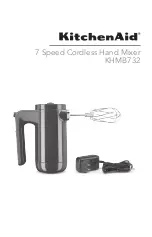
14
HELIX BOARD 12 UNIVERSAL
Output Channels
By entering the Output Channels section, users can view and
edit the names of the two output channels from the computer to
the Helix Board 12 Universal mixer.
Synchronization
In the Synchronization section, users can adjust the sampling rate
and other synchronization properties. Many of these adjustable
properties, as they are, are set for optimum performance and,
unless you are sure of what you need to change, are probably
best left alone. First off, the synch mode can be altered, though
making this alteration is not recommended for novice users.
The synch mode is basically the way the computer determines
what the ‘clock source’ (ie. device that your computer will use to
determine the timing of all digital signals received) will be. The
default setting for this feature is “CSP”, meaning the Helix Board
12 Universal is the “master” clock source of the device. The other
options allow users to make the Helix Board 12 Universal follow
the “timing” of whichever device is the clock source. Having two
clock sources has the potential to create very undesirable audio,
so it should be avoided. If the Helix Board 12 Universal is the
only piece of digital audio equipment attached to the computer,
there is no reason this option should be changed.
Users are also able to change between automatic and manual
sampling rate settings. When the sampling rate is manually set,
users can select between sampling rates of 44.1, 48.0, 88.2 and
96.0 kHz per second. Many devices have sampling rates that do
not surpass 44.1 kHz per second, therefore, when using multiple
digital devices, users are advised not to exceed this level unless
they are sure the secondary device’s sampling rate can.
Settings
Users are able to adjust various buffer times in the Settings
section.
The Stream Buffer Depth is adjustable between 0.5 and 20
milliseconds. It adjusts the buffer used when streaming a signal
from the Helix Board 12 Universal. If the depth is set too high,
an obvious latency will become evident. If the depth is too low,
various clicks and pops may become obvious. It is best to set
the Stream Buffer Depth to a level that allows users to get the
lowest latency, while still maintaining an optimal performance.
The default settings are ideal for most computers.
The ASIO Buffer Depth is adjustable between 4 and 40
milliseconds. This allows users to adjust the latency of the stream
received by ASIO driver-based software (including Steinberg
Cubase LE).
The WDM (Windows Driver Model) Sound Buffer Depth is
adjustable between 4 and 40 milliseconds. This allows users
to adjust the latency of the stream received by WDM based
programs.
Also in this section, users are able to view their “drop out statistics”,
where the number of times the FireWire / USB connection has
been interrupted can be viewed.
Streams
In the Streams section, the Helix Board 12 Universal device
properties can be viewed. Each input and output stream can
be scrutinized, and the isochronous stream number and its
supported sampling rates can be viewed.
Содержание HELIX BOARD 12
Страница 17: ......
Страница 32: ...1 2 3 4 5 6 7 8 9 10 11 12 13 14 CAUTION RISK OF ELECTRIC SHOCK DO NOT OPEN PHONIC CORPORATION...
Страница 39: ...39 Helix Board 12 Universal Next Next Next...
Страница 40: ...40 Helix Board 12 Universal Helix Board 12 Universal Windows Logo Continue Anyway FireWire USB...
Страница 52: ......















































